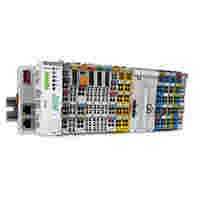RETROFITTING COMPLEX HVAC SOLUTIONS WITH WAGO

How do you install a new absorptions chiller, including peripherals, in a shipping container for use in an existing building? With the right partner for systems and building technology and the right automation solution. CHRISTOFFERS from Delmenhorst (Lower Saxony) and WAGO from Minden (North Rhine-Westphalia) show how. From the frequency converters, to the heat exchanger, to the connection to the building control system – all the chiller automation runs via a PFC200. In this project, the WAGO I/O System 750 once again demonstrates its suitability for both series production and custom solutions.
Some things just take a lot of time – municipal bureaucracies, for example, as many a building owner in Germany can testify. In a construction project for a northern German university site, the red tape was slowing things down too much. To retrofit an existing building with a chiller, an annex was required to accommodate the new technology. Because there was no chance that the construction permit application would be processed and approved in the foreseeable future, the project required ingenuity – as well as an innovative partner with extensive expertise.
An Overview of the Project:
The challenge: to automate the control of the chiller and the peripherals of the container and connect them to the higher-level building control system
Openness plus a modular design: The WAGO I/O System 750 was the only automation system considered
Everything under control – with the PFC200 as the central control unit
All the applications were conveniently implemented in using function blocks based on CODESYS V3.







